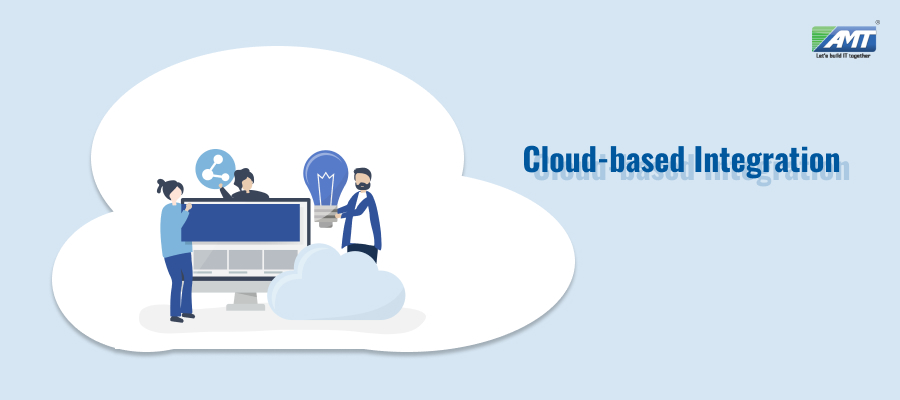Cloud-based integration is a form of systems integration business delivered as a cloud computing service that addresses data, process, service-oriented architecture (SOA) and application integration.
System integration is defined in engineering as the process of bringing together the component sub-systems into one system (an aggregation of subsystems cooperating so that the system is able to deliver the overarching functionality) and ensuring that the subsystems function together as a system, and in information technology as the process of linking together different computing systems and software applications physically or functionally, to act as a coordinated whole.
The system integrator integrates discrete systems utilizing a variety of techniques such as computer networking, enterprise application integration, business process management or manual programming.
System integration involves integrating existing, often disparate systems in such a way “that focuses on increasing value to the customer” (e.g., improved product quality and performance) while at the same time providing value to the company (e.g., reducing operational costs and improving response time). In the modern world connected by Internet, the role of system integration engineers is important: more and more systems are designed to connect, both within the system under construction and to systems that are already deployed.
One marketing buzzword is iPaaS (integration platform as a service), for a suite of cloud services enabling customers to develop, execute and govern integration flows between disparate applications. Under the cloud-based iPaaS integration model, customers drive the development and deployment of integrations without installing or managing any hardware or middleware.[1] The iPaaS allows businesses to achieve integration without big investment into skills or licensed middleware software. iPaaS used to be regarded as an integration tool for cloud-based software applications, used mainly by small to mid-sized business. In the meantime, however, a hybrid type of iPaaS, i.e. Hybrid-IT iPaaS, that connects cloud to on-premises, is becoming increasingly popular. Additionally, large enterprises explore ways of integrating iPaaS into the existing IT estate.
Cloud integration was basically created to break down the data silos, improve connectivity and optimize the business process. Cloud integration has increased its popularity as the usage of Software as a Service solutions is growing day by day. Software as a service (also known as subscribeware or rentware) is a software licensing and delivery model in which software is licensed on a subscription basis and is centrally hosted. It is sometimes referred to as “on-demand software”, and was formerly referred to as “software plus services” by Microsoft.
SaaS applications are also known as Web-based software, on-demand software and hosted software. The term “software as a service” (SaaS) is considered to be part of the nomenclature of cloud computing, along with infrastructure as a service (IaaS), platform as a service (PaaS), desktop as a service (DaaS), managed software as a service (MSaaS), mobile backend as a service (MBaaS), datacenter as a service (DCaaS), and information technology management as a service (ITMaaS).
Prior to the emergence of cloud computing, integration could be categorized as either internal or business to business (B2B). Internal integration requirements were serviced through an on-premises middleware platform and typically utilized a service bus to manage exchange of data between systems. B2B integration was serviced through EDI gateways or value-added network (VAN). The advent of SaaS applications created a new kind of demand which was met through cloud-based integration. Since their emergence, many such services have also developed the capability to integrate legacy or on-premises applications, as well as function as EDI gateways.
The following essential features were proposed by one marketing company:
- Deployed on a multi-tenant, elastic cloud infrastructure
- Subscription model pricing (operating expense, not capital expenditure)
- No software development (required connectors should already be available)
- Users do not perform deployment or manage the platform itself
- Presence of integration management and monitoring features
The emergence of this sector led to new cloud-based business process management tools that do not need to build integration layers – since those are now a separate service.
Drivers of growth include the need to integrate mobile app capabilities with proliferating API publishing resources and the growth in demand for the Internet of things functionalities as more ‘things’ connect to the Internet. The integration market has a variety of players, such as application designers, systems integrators, cloud vendor, network service providers and development service providers.
These include Software AG, Dell Boomi, IBM, Wevo, LinkApi, SAP, ONEiO (previously Service-Flow), Oracle, Microsoft, Apigee, MuleSoft, Cyclr, Greenbird , N2N Services, eBridge Connections, Junipeer, Azuqua and TIBCO Software.
The above is a brief about Cloud-based Integration. Watch this space for more updates on the latest trends in Technology.
